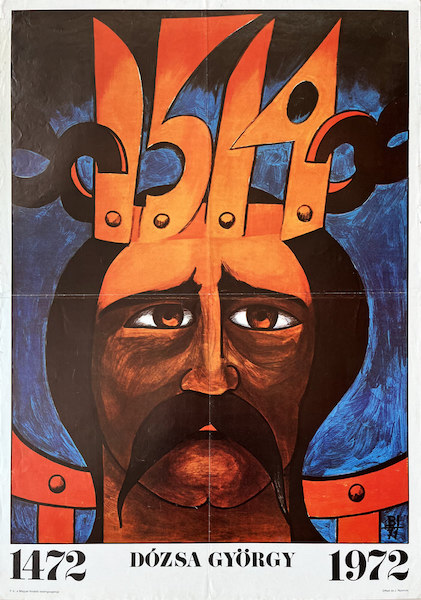
Description:
Poster for the 500th anniversary of Dózsa György's birth. Although presently his exact date of birth is unidentified, according to the poster, a celebration for the anniversary was held in 1972. In the socialist era the distortion of reality and misinterpretation of facts were often applied if the political power found it useful for their own purposes. Hence they easily made unrealistic statements such as Dózsa was born in 1472.
György Dózsa (1470s – 20 July 1514) was a Székely man-at-arms (and by some accounts, a nobleman) from Transylvania, Kingdom of Hungary who led a peasants' revolt against the kingdom's landed nobility. He was eventually caught, tortured, and executed along with his followers, and remembered as both a Christian martyr and a dangerous criminal. During the reign of king Vladislas II of Hungary (1490–1516), royal power declined in favour of the magnates, who used their power to curtail the peasants’ freedom. The peasant's revolt lasted only for a month, however, it was very bloody. (source: wikipedia.org)
The poster depicts the worn face of György Dózsa, and the date of the peasant's revolt appears as a crown on his head. The two dates on the bottom indicate the (supposed) year of his birth and the year of the event. The socialist regime considered the workers and peasants as the social classes that could potentially support them the most, thus they addressed their propaganda to them. The figure of Dózsa as the idol of peasantry was an evident tool in the hands of the regime.











